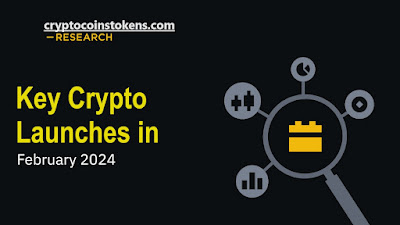RenQ Crypto: Empowering the Future of Decentralized Finance
RenQ Crypto Introduction
The world of cryptocurrencies continues to evolve rapidly, revolutionizing traditional financial systems and introducing innovative solutions. Among the plethora of crypto projects emerging in recent years, RenQ has garnered significant attention. RenQ Crypto, built on the principles of decentralization, interoperability, and privacy, is poised to reshape the landscape of decentralized finance (DeFi). In this article, we will explore the fundamental concepts behind RenQ Crypto, its features, use cases, and its potential impact on the future of finance.
Understanding RenQ Crypto
RenQ Crypto is a blockchain-based project that aims to enable seamless cross-chain liquidity and interconnectivity for decentralized applications (dApps) within the DeFi ecosystem. It leverages RenVM, an open protocol for trustless and decentralized custodianship, to bring different cryptocurrencies and assets from various blockchains into a unified ecosystem.
The Core Principles of RenQ
RenQ Crypto is founded on three core principles: decentralization, interoperability, and privacy. By prioritizing decentralization, RenQ reduces reliance on centralized intermediaries, empowering users with greater control over their assets. Interoperability allows for seamless asset transfer between different blockchain networks, enabling liquidity to flow freely. Furthermore, privacy is a key aspect of RenQ, ensuring user transactions and activities remain confidential and secure.
RenQ Features and Functionality
RenQ Crypto offers several innovative features that distinguish it from other projects in the DeFi space. One of its key features is cross-chain interoperability, which enables users to move assets between different blockchains, such as Ethereum, Bitcoin, and Binance Smart Chain. This flexibility opens up a wide range of possibilities for decentralized applications and smart contract interactions.
RenQ also introduces the concept of wrapped tokens, called "RenBTC" and "RenZEC," which are representations of Bitcoin and Zcash, respectively, on the Ethereum network. These wrapped tokens provide liquidity and accessibility to users, allowing them to utilize their Bitcoin or Zcash assets within the Ethereum DeFi ecosystem.
Additionally, RenQ incorporates a unique consensus mechanism known as "Darknode." Darknodes perform the tasks of validating transactions, storing state information, and facilitating inter-blockchain communication. By participating in the network as a Darknode operator, users can earn rewards and contribute to the security and efficiency of the RenQ ecosystem.
Use Cases of RenQ
RenQ Crypto presents numerous compelling use cases within the DeFi ecosystem. One such application is cross-chain liquidity provision, enabling users to access decentralized exchanges and lending platforms across different blockchain networks. This promotes efficient capital allocation and enhances the overall liquidity of the DeFi market.
Moreover, RenQ's interoperability and privacy features enable the creation of sophisticated decentralized applications. For example, developers can build cross-chain decentralized exchanges (DEXs), lending and borrowing platforms, and stablecoin protocols that are not restricted to a single blockchain. This expands the possibilities for DeFi innovation and promotes financial inclusivity.
Potential Impact and Challenges
RenQ Crypto has the potential to significantly impact the future of finance and the broader adoption of decentralized systems. By addressing the challenges of cross-chain interoperability, RenQ enables seamless asset transfer and unlocks liquidity across disparate blockchain networks. This facilitates the growth of DeFi, making it more accessible and user-friendly for individuals and institutions alike.




Comments
Post a Comment